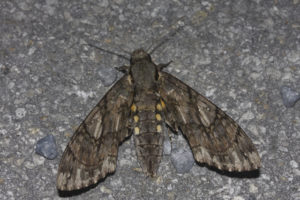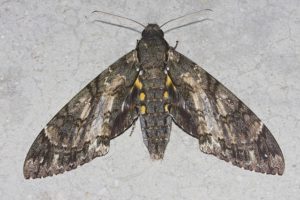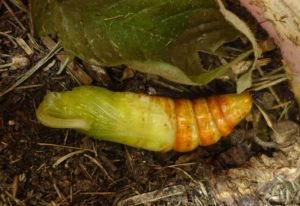Giant Sphinx Moth (Cocytius antaeus)
The giant sphinx moth is a member of the family of hawk moths. British entomologist Dru Drury first described this species in 1773.
discoverlife.org
Scientific Classification
- Family: Sphingidae
- Genus: Cocytius
- Scientific Name: Cocytius antaeus
Description and Identification
Adult Moth
Sexual Dimorphism: Present but not prominent.
Color and Appearance
Forewing: When the wings are opened, they have a yellowish-gray blurry coloration. When the wings are closed, the color remains the same.
Hindwing: When the wings are opened, they appear dark gray overall all but for the base that is yellow. When the wings are closed, the grayish-yellow pattern can still be seen.
Average wingspan: 12.6-17.8 cm
Flight pattern: Erratic
Season: Not recorded
Egg
Females lay their eggs on the custard apple plant.
Quick Facts
| Distribution | Florida and the tropical part of America south to Brazil and Peru. Also, sometimes in South Texas. |
| Habitat | Tropical and subtropical lowlands |
| Lifespan of Adults | 10-30 days |
| Host Plants | Custard apple |
| Adult Diet | Flower nectar |
Did You Know
- This moth was once believed to be the only insect with a long enough proboscis (sucking mouthpart) capable of pollinating the rare ghost orchid.

discoverlife.org
Scientific Classification
- Family: Sphingidae
- Genus: Cocytius
- Scientific Name: Cocytius antaeus




